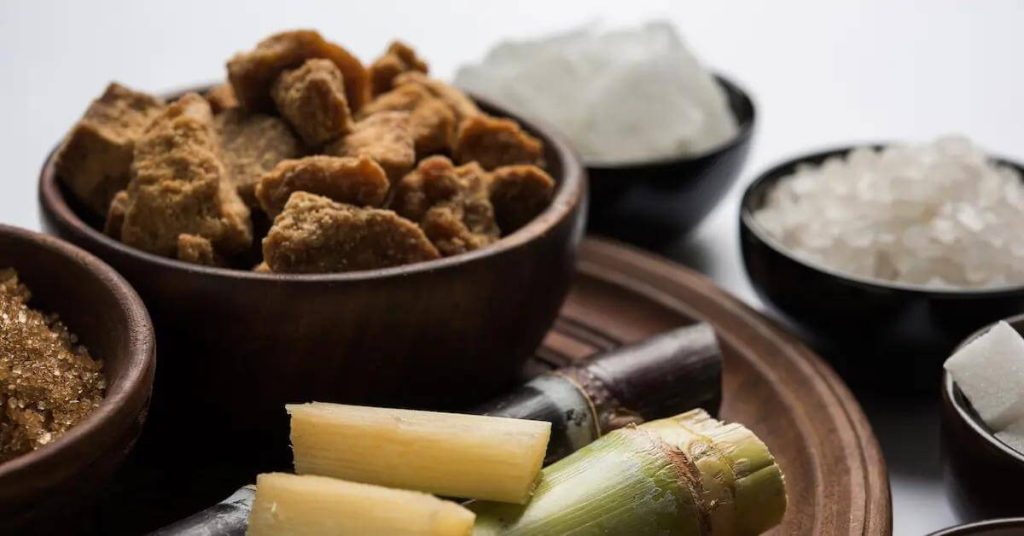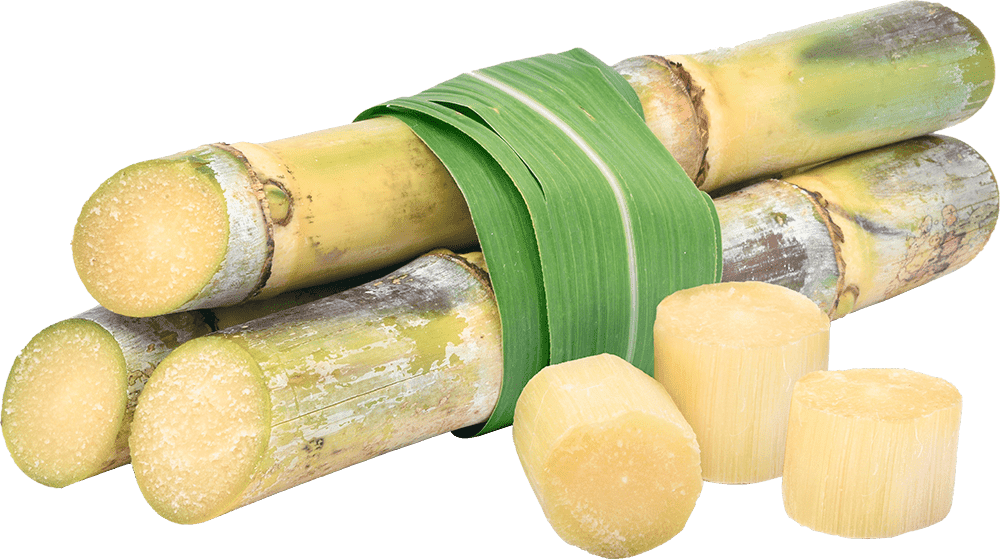Cane Sugar Processing: Key Technologies for Superior Sugar Production
Cane Sugar Processing: Key Technologies for Superior Sugar Production
Blog Article
An Extensive Guide to the Environmental Effect and Sustainability Practices in Walking Cane Sugar Handling
The ecological impact of cane sugar processing provides a complicated selection of challenges that warrant cautious exam. From soil deterioration and too much water usage to the carbon impact connected with cultivation and production, the repercussions of conventional techniques are far-reaching. On the other hand, the fostering of innovative sustainability procedures uses a pathway toward more responsible manufacturing approaches. Recognizing the interaction between these problems is crucial for stakeholders in the sector. What details techniques can be executed to strike a balance in between performance and environmental stewardship? The solutions hinge on a more detailed check out both the difficulties and potential remedies.
Summary of Cane Sugar Handling
Walking stick sugar processing entails a collection of organized steps that transform sugarcane right into refined sugar. Initially, collected sugarcane is transported to refining facilities, where it undertakes cleaning to get rid of soil and debris. Following this, the cane is squashed to extract juice, which is after that clarified by eliminating impurities with home heating and the addition of lime.
The cleared up juice goes through dissipation, where water is eliminated to focus the sugar content. This concentrated syrup is after that crystallized with air conditioning, allowing sugar crystals to create. These crystals are separated from the staying syrup making use of centrifugation, leading to raw sugar. To attain polished sugar, the raw product goes through more purification processes, which may consist of cleaning and filtering system to get rid of continuing to be impurities and color.
The end product is then dried and packaged for distribution. Throughout this whole procedure, maintaining effectiveness and quality assurance is necessary to make sure the sugar fulfills sector standards. Each action in cane sugar handling not just adds to the last item but likewise has ramifications for resource usage and waste generation, establishing the phase for discussions on sustainability and environmental impacts associated with sugar production.
Environmental Challenges of Production
The production of walking cane sugar offers numerous considerable environmental challenges that warrant interest. One primary concern is the extensive use agrochemicals, including chemicals and fertilizers, which can bring about soil destruction, biodiversity loss, and contamination of local water sources. The drainage from sugarcane fields frequently brings these chemicals right into neighboring communities, disrupting marine life and influencing the health and wellness of communities reliant on these water bodies.
Another difficulty is the high energy consumption related to sugarcane handling. The boiling and refining stages call for considerable heat, primarily created by shedding fossil fuels, contributing to greenhouse gas exhausts. Furthermore, the expansive land location required for sugarcane farming can cause deforestation and environment destruction, further aggravating environment change and threatening wildlife.
Furthermore, the labor methods in some regions elevate moral issues, as employees may face inadequate working conditions and poor earnings. This scenario usually continues a cycle of destitution in regional areas. Cane Sugar Processing. Attending to these ecological difficulties is critical for establishing extra lasting methods in walking cane sugar production, eventually profiting both the environment and the neighborhoods involved in this market
Water and Land Usage Influence
Water sources and land utilization are important components in the walking stick sugar sector that considerably affect the setting. The farming of sugarcane requires considerable water input, with price quotes recommending that it can consume as much as 2,000 litres of water per kilo of sugar produced. This intensive use water usually leads to exhaustion of regional water sources, affecting not only the sugarcane ranches however likewise bordering ecosystems and communities that depend on the exact same water resources for farming and residential usage.

In addition, land use for sugarcane farming can cause deforestation and go to these guys the conversion of all-natural environments into monoculture vineyards. This practice decreases biodiversity, interferes with local ecological communities, and contributes to dirt destruction. The expansion of sugarcane areas often elbows in on important farming land, developing competition for resources in between food and biofuel manufacturing.
Sustainable methods, such as maximizing irrigation techniques and carrying out crop turning, are vital to reduce these effects. By taking on more effective water use and land monitoring strategies, the cane sugar market can minimize its eco-friendly footprint, guaranteeing a balance between farming performance and ecological conservation.
Greenhouse Gas Emissions
Greenhouse gas exhausts represent a considerable web environmental problem within the walking cane sugar processing industry, particularly as agricultural practices expand to meet global demand. The farming of sugarcane, a plant that prospers in exotic environments, counts greatly on artificial plant foods and chemicals, which add to laughing gas discharges. Furthermore, land-use modifications, including deforestation for new sugarcane ranches, release carbon dioxide stored in plant life and dirt.
During processing, power usage is an additional significant source of greenhouse gas emissions - Cane Sugar Processing. Several sugar mills use fossil fuels to power equipment and produce heat, causing significant carbon footprints. Furthermore, the transport of raw sugarcane and completed products includes layers of emissions via fuel combustion in automobiles
This includes assessing current agricultural techniques, processing methods, and transport systems to recognize areas for renovation and reduction. Resolving greenhouse gas discharges is vital for fostering a much more sustainable walking cane sugar industry in an altering environment.

Sustainable Practices and Innovations
Lasting methods and innovations are significantly vital in the walking stick sugar processing sector as stakeholders seek to lower environmental influences while preserving performance. One considerable advancement is the application of integrated plant monitoring, which enhances source use by incorporating soil monitoring, insect control, and plant rotation methods. This approach improves return while reducing chemical inputs and maintaining soil health and wellness.
In addition, the adoption of eco-friendly energy sources, such as biomass from sugarcane deposits, has gotten grip - Cane Sugar Processing. By transforming waste products into power, refining facilities can minimize their dependence on nonrenewable fuel sources, thus decreasing greenhouse gas emissions
Water administration practices have actually additionally seen improvements with the recycling and reusing of water in handling plants, significantly decreasing freshwater usage. Technologies in technology, such as click over here precision agriculture, allow farmers to check plant wellness and resource use better, guaranteeing sustainable growing methods.
In addition, qualification programs like Fair Profession and Rain forest Partnership encourage environmentally responsible farming practices and promote social equity within the supply chain. By embracing these sustainable practices and developments, the walking stick sugar processing market can boost its strength and add favorably to environmental stewardship.
Final Thought
The environmental impact of cane sugar handling offers substantial obstacles, consisting of soil degradation, high water consumption, and greenhouse gas emissions, along with moral worries associated with labor methods. Dealing with these issues through lasting practices, such as incorporated plant administration, renewable resource fostering, and water recycling, is crucial. By advertising ecologically responsible and socially fair approaches in sugar production, the industry can minimize its adverse results, making certain a much more sustainable future for both ecosystems and areas associated with this market.
Cane sugar handling involves a collection of methodical actions that change sugarcane into polished sugar. Each step in walking cane sugar processing not just contributes to the last product yet also has effects for resource usage and waste generation, setting the phase for discussions on sustainability and ecological impacts connected with sugar production.
Greenhouse gas emissions represent a significant environmental problem within the walking stick sugar handling industry, especially as agricultural methods increase to meet worldwide demand.Sustainable techniques and innovations are significantly important in the cane sugar processing sector as stakeholders look for to decrease ecological influences while keeping efficiency.The ecological impact of walking stick sugar processing offers substantial difficulties, including soil degradation, high water consumption, and greenhouse gas emissions, alongside ethical concerns associated to labor methods.
Report this page